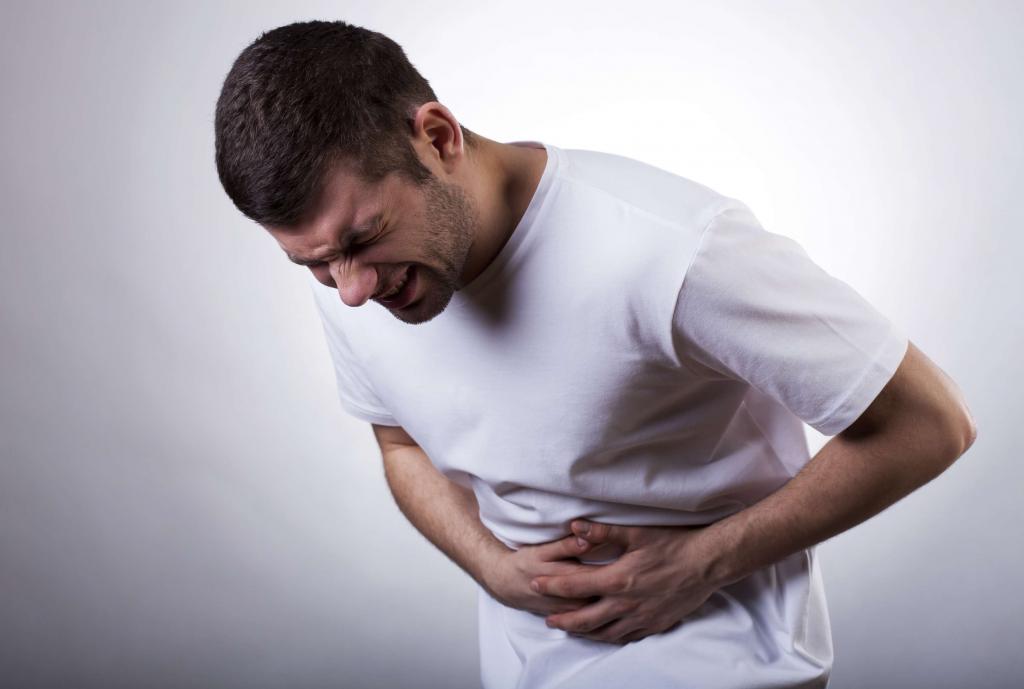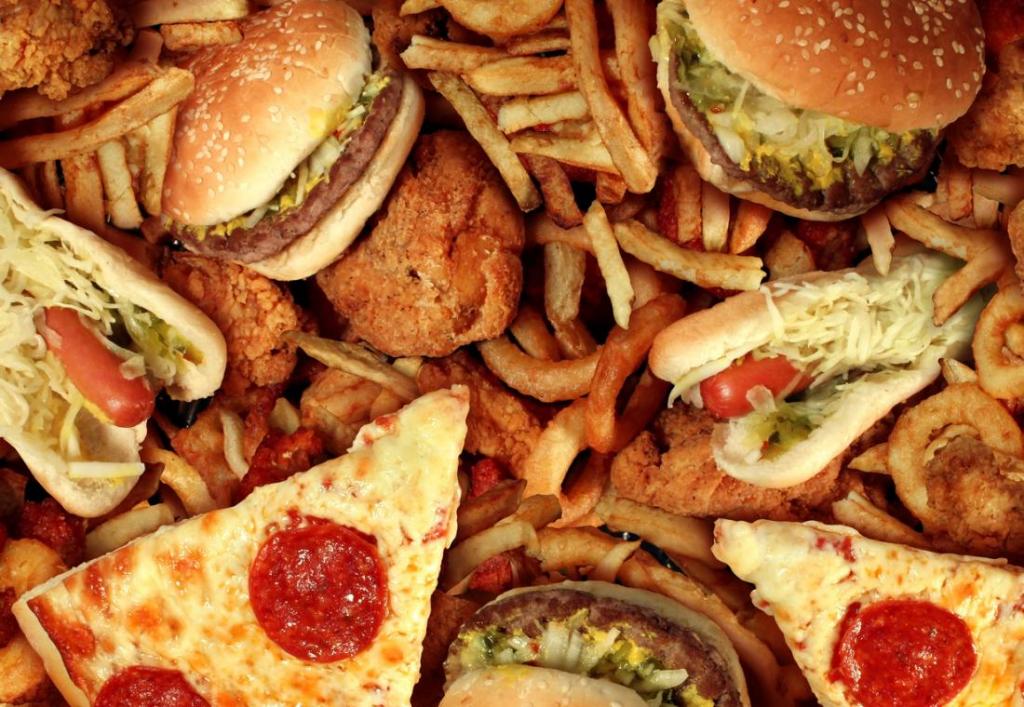One of the main problems considered by modern gastroenterology is dyspepsia. It develops when food is poorly digested in an adult or in a child, resulting in diarrhea, stagnation of feces or vomiting. Various causes lead to the development of this disease. But most people, and according to medical statistics, up to 40% of the inhabitants of developed countries have to experience digestive discomfort, are in no hurry to consult a doctor.
Only one in ten patients comes to a specialist consultation. The rest frivolously dismiss this problem. However, if the food is not digested by an adult and partially comes out with feces, it is urgent to find out the cause of this phenomenon. It can be not only a consequence of an error in the diet, but also a symptom of a malignant neoplasm. That is why identifying the cause of the pathology is sometimes not just getting rid of uncomfortable digestion, but the ability to save a person’s life.

The main stages of digestion
Food, as you know, enters our body through the mouth, where it is ground. After this, the resulting mass moves along the esophagus into the stomach. Here, all products become liquid and break down into fats, proteins and carbohydrates. Processed food in the stomach from 15 minutes. up to 7-8 hours. The specific time depends on the type of processing of the products, their temperature, as well as on the compatibility of the various ingredients of the meal. All that remains undigested passes further into the duodenum.
At all stages of the passage of food in the digestive tract, enzymes act on it. These substances lead to the breakdown of proteins, fats and carbohydrates into separate components. As a result of this process, monosaccharides, amino acids and fatty acids arise. All of them enter the bloodstream due to the work of the epithelium lining the walls of the small intestine. The remaining "waste" is sent further. Once in the large intestine, undigested food is exposed to microorganisms, which leads to the formation of toxins.
Malfunctions in the digestive tract

That is why such a state is called by people "lazy stomach." Indeed, in this case, this body does not fulfill the functions assigned to it. This leads to the fact that food that enters the human body lingers longer than usual in the stomach and is not digested as it should be normal.
Classification
Why is food poorly digested in adults? The reason for this is the development of dyspepsia, which may be:
- Functional. This is an independent type of disease. It is due to functional upset stomach.
- Organic. This type of dyspepsia is a concomitant symptom of other developing diseases. For example, indigestion of food is noted for poisoning, infections, cholecystitis, etc. With the organic form of pathology, structural changes in the cells and tissues of the digestive tract occur. If food is poorly digested in an adult, then the treatment of the pathology will depend on its type. That is why it is so important to accurately determine the diagnosis, which can be done only by visiting a specialist.
Classification of functional dyspepsia
The following alimentary types of pathology are distinguished:
- Putrid. In this form of dyspepsia, food is not digested in an adult due to excessive inclusion of protein products in the diet. This is especially true of those that are able to digest only for a long time. The breakdown of proteins is accompanied by the release of toxic substances that poison the patient's body. Such products are red meat (beef, pork, lamb) and its derivatives (sausage, etc.). The abuse of such food leads to the formation of putrefactive microflora in the intestine.
- Fatty or soapy. Why is adult food not digested with this type of dyspepsia? Contributing to the pathology is the ingestion of too much refractory fat. They are found in lard and lamb, as well as their derivatives.
- Fermentation This type of pathology develops due to the predominance of dishes prepared from foods with a high carbohydrate content in the menu. Such food also contributes to the development of the fermentation process. Adult food is not digested with excessive consumption of sweet and flour products, fruits and honey, cabbage and peas, legumes, mash and kvass, pickled vegetables, etc. In this case, fermentation microflora begins to develop in the intestine.
Classification of Organic Dyspepsia
If food is poorly digested in an adult, the following types of enzyme deficiency may become the causes of this condition:
- Pancreatogenic. This type of dyspepsia is due to a lack of enzymes produced by the pancreas.
- Gastrogenic This type of pathology is caused by malfunctions of the secretory function performed by the stomach.
- Enterogenic. In this case, food is not completely digested in adults due to a violation of the secretion of intestinal juice.
- Hepatogenic. This type of dyspepsia is of hepatic origin.
- Cholecystitogenic. Indigestion of food in this case is caused by a violation of bile secretion.
- Mixed. Such dyspepsia combines several organic varieties of pathology at once.
Provocative factors
Why is adult food not digested?

At present, gastroenterologists have not yet identified specific causes for the development of the "lazy stomach" syndrome. Nevertheless, it is known for certain that the influence of certain factors contributes to the development of pathology. Among them:
- overeating, poor nutrition, eating a large number of too fatty foods;
- pathology of the digestive tract, having a chronic nature;
- frequent stress and psycho-emotional stress;
- sedentary lifestyle;
- uncontrolled use of drugs, especially hormones and antibiotics;
- smoking;
- Helicobacter pylori infection;
- excessive use of coffee;
- recent gastrointestinal infections (salmonellosis, giardiasis, etc.);
- poisoning the body with chemicals;
- age-related changes;
- disorders of the motility of the duodenum and stomach.
Sometimes dyspepsia occurs due to dental ailments. They are able to provoke the ingestion of pathogenic bacteria in the digestive tract. Lazy stomach syndrome also occurs with alcohol abuse. Ethanol intoxication significantly impairs the function of this organ. This is precisely the reason why people experience nausea during a hangover. Undigested food provokes it, which is pushed back.

Another possible cause of the pathology is atony of the stomach. A similar condition leads to a decrease in the tone of his muscle layer. In this regard, food stops moving in the right direction. It accumulates in the stomach, starting to press on its walls. A similar process further reduces muscle tone. Atonia often occurs in pregnant women.

Among the possible reasons that an adult does not digest food may include the following:
- Weak gastric secretion. This process is caused by hormonal changes or malfunctions in the functioning of the secretory glands.
- Failures in the metabolism. Obstruction of the stomach sometimes occurs in connection with a slowdown in the release of enzymes that promote digestion. A similar process is evidence of enterogenic, hepatogenic, pancreatogenic or gastrogenic insufficiency.
- The accumulation of pathogenic microorganisms on the gastric mucosa. Such bacteria significantly exacerbate the manifestations of pathology.
It is worth noting that when contacting a doctor with a complaint that the food is not digested in an adult, the causes of functional dyspepsia in 30-35% of cases cannot be identified.
Manifestation of the syndrome
How to determine that an adult does not digest food? The treatment of dyspepsia should be started immediately after the onset of its first symptoms, which are:
- pain in the epigastric region, which most often bother at night;
- increased bloating of the intestines and stomach;
- a feeling of satiety, despite a long break in eating;
- indigestion, expressed by nausea, heartburn and vomiting.
Symptoms of dyspepsia, depending on its type, may have some differences. Let's consider them in more detail.
Signs of a fermentative form of pathology
Symptoms of this type of syndrome are expressed in severe flatulence and frequent diarrhea, which is characterized by a slightly colored stool with an acidic smell and a liquid, foamy structure. This type of dyspepsia, provoked by food, which contains a large amount of fiber, occurs, as a rule, in acute form. For fermentative pathology, the presence of severe seizures is uncharacteristic; it is successfully treatable.
Signs of putrefactive form of pathology
A similar type of dyspepsia occurs in people who prefer protein foods - meat, fish and eggs. Symptoms of this form of pathology are:
- diarrhea with putrid odor;
- disruption of metabolic processes;
- decreased immune defense;
- lack of appetite.
Signs of fatty pathology
With this type of dyspepsia, patients complain of rumbling in the abdomen, diarrhea, bloating and general weakness. The stool in this case is liquid and frequent, light, with a predominance of either a neutral or alkaline reaction.

When conducting a microscopic examination of feces, significant accumulations of crystals of fatty soaps and fatty acids are observed.
Signs of Organic Syndrome
Symptoms of dyspepsia, which is a concomitant disease in the pathology of the gastrointestinal tract, are manifested in the following:
- general deterioration;
- fatigue;
- migraine;
- muscle weaknesses;
- night insomnia and sudden daytime sleepiness;
- diarrhea and stomach discomfort;
- intoxications and flatulence, which are not accompanied by vomiting.
Elimination of functional dyspepsia
If, for one reason or another, food is poorly digested by an adult, treatment must certainly be comprehensive. In addition to the use of medications, the patient is recommended measures that contribute to the normalization of the nature and diet, as well as lifestyle.

The course of treatment of functional dyspepsia consists in the exclusion of fatty, spicy and salty dishes from the menu. The patient should eat up to eight times a day and at the same time in small portions. If necessary, additionally assigned:
- antacids ("Almagel", "Gaviscon");
- proton pump inhibitors (Rabeprazole, Omeprazole);
- sedatives ("Grandaxinum", "Phenazepamum").
In the case of fermentative dyspepsia, the course of treatment begins with a diet that is distinguished by a low content of carbohydrate food. It is allowed to include high-protein dishes (meat broth, steamed chicken, butter) in the menu, while reducing the number of cereals, pastries, fruits, vegetables, potatoes and bread. Adsorbent substances (Polysorb, Smecta), probiotics (Bifikol, Laktrofiltrum), as well as enzyme agents (Pancreatin, Creon) are used to eliminate fermentative dyspepsia. Gradually, as the patient recovers, carbohydrate-containing products are introduced into his diet in limited quantities.
Therapy for putrefactive dyspepsia is carried out similarly to that used for the fermentation form. First of all, high protein foods are excluded from the diet. At the same time probiotics and sorbents are used. The need for antibiotics is determined by the doctor.
The treatment of fatty dyspepsia is carried out with the restriction of the inclusion of fats in food. The main dishes for the patient should be fat-free cottage cheese and lean meat, boiled fish, etc. The consumption of carbohydrates should be moderate. Drug treatment consists in the appointment of calcium carbonate, gastroprotectors and vitamins, including ascorbic and nicotinic acid.
Elimination of Organic Dyspepsia
When you contact a doctor who will make an accurate diagnosis, you will be able to understand why adult food is poorly digested. Treatment of the causes of organic dyspepsia is the treatment of the underlying disease. Depending on the type of pathology, medical tactics will also be specified. For example, if the cause of the “lazy stomach” syndrome is peptic ulcer or gastritis, then the patient is recommended:
- Diet. Its menu excludes spicy, salty and fatty dishes. Fiber-rich foods should also be excluded from the daily diet, namely fruits, rye bread, juices, vegetables, etc. It should be borne in mind that they all contribute to increased pain.
- In case of detection of Helicobacter pylori infection, complex antimicrobial therapy is prescribed. It necessarily includes two types of antibiotics.
- To normalize acidity, lower it with drugs that are part of the proton pump inhibitor group, or increase it by stimulating acid-forming plantaglucid cells. Use in the latter case, and plantain juice.
- Taking medications that help create a protective membrane for the gastric mucosa (De Nola, Sucralfate, etc.)
If an open ulcer is detected, surgery is performed. An indication for it is the neoplasm that has arisen.
If the syndrome of "lazy stomach" is caused by hormonal failure, then the treatment is prescribed by the endocrinologist.